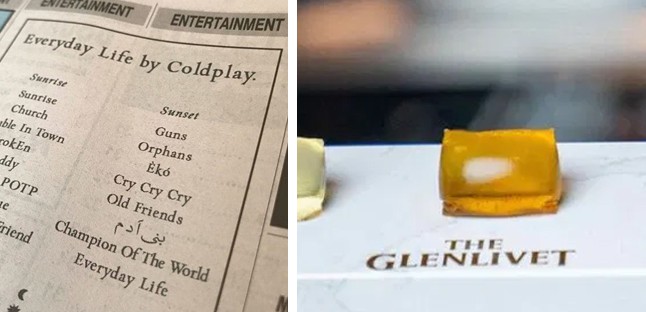Latest posts
What’s going on at parkrun?
Virtue-signalling all the way to the bank
Bud Light: brand purpose or virtue-signalling?
The Coddling of the American Mind, by Greg Lukianoff and Jonathan Haidt
Belonging, by Owen Eastwood
Such a simple thing
The Long Win, and The Scout Mindset
The Cult of We by Eliot Brown and Maureen Farrell
Coffee and covid modelling
John Lewis: so right-on it’s wrong
By theme
Marketing strategy
Insight & metrics
Innovation & inspiration
Brand & positioning
Marketing communications
Business purpose
Leadership
By industry sector
Financial services
Retail
FMCG
Technology & start-ups
Consumer services
Business to business
Other sectors
By type
Books
Comment
Quotes
Thought leadership
How do you get attention when you’re so familiar that people think they know you already? Two recent media stunts by established brands say it can be done – but be prepared for a backlash. “Going viral” isn’t always good news.
First, the one that worked. In November 2019 Coldplay launched their new album, Everyday Life, by announcing the track listing in the classified ads section of local newspapers. They chose papers that band members had some connection with. The press ad was nothing more than a simple track listing: not a genuine classified, then, but part of a media stunt which also involved letters to selected fans to ensure it was picked up. It was duly reported and much discussed in national media. Great result. Full marks to Coldplay for an endearing use of old media, which was amply rewarded in new and old media coverage.
The month before, Glenlivet’s whisky pods attracted ridicule. They were in fact a limited edition product for London Cocktail Week but that didn’t stop a tirade of negativity on Twitter. Was that fair? It’s safe to assume these aren’t aimed at a demographic whose first thought on seeing them is, Will these shift stains in a low temperature wash? Nor, indeed, at Glenlivet’s own core market. It could be a cunning way to bring whisky to the Jägerbomb generation, or just a fun way to smuggle more whisky into cocktails. The social media frenzy reminded us all that Glenlivet is there, but it felt badly out of tune with the world of single malt whisky, which is all firesides and Scottish peat bogs.
Now in their 20th year, Coldplay are music industry veterans, focused on those who already love them. In using old media in a novel way they did something fresh but not shocking. Their stunt felt authentic, which will endear them even more to current fans and may attract new ones.
Glenlivet’s move is a stranger one. The pod concept feels entirely out of character. A weird new product is more problematic than an oddball media move, even if both are transient, because product format is much more central to the brand than marketing communications. So what’s the value of producing a novel format for a promotional event? It has to be good to be worth the risk of alienating the core customer base. Perhaps, like the concept cars at motor shows that are part of the development process, there is more to come from Glenlivet. But I think it more likely this is a quirky idea someone dreamed up in the moment for a bit of fun at London Cocktail Week.
One of the biggest decisions brands must make is whether to focus on retaining current customers, perhaps increasing their consumption, or on attracting new customers, to widen and future-proof the franchise. Neither is inherently better, but it’s much easier to do one well. To those people who shout triumphantly, why not both? I say, that’s not as smart as you think it is. The infamous New Coke fiasco was the result of efforts to attract Pepsi drinkers without considering how their most committed customers would feel about the change.
A brief flare-up on Twitter is soon forgotten. It’s not a worry for a brand that’s been around for almost 200 years, as Glenlivet has. But there’s a wider picture to consider. Time and investment in one thing is time and investment that could have gone elsewhere. And everything you do can have unintended consequences, which aren’t always apparent. I wrote about that here. Unless you believe all publicity is good publicity, the people around Glenlivet could perhaps have spent their time and energy better.
Latest posts
What’s going on at parkrun?
Virtue-signalling all the way to the bank
Bud Light: brand purpose or virtue-signalling?
The Coddling of the American Mind, by Greg Lukianoff and Jonathan Haidt
Belonging, by Owen Eastwood
Such a simple thing
The Long Win, and The Scout Mindset
The Cult of We by Eliot Brown and Maureen Farrell
Coffee and covid modelling
John Lewis: so right-on it’s wrong
By theme
Marketing strategy
Insight & metrics
Innovation & inspiration
Brand & positioning
Marketing communications
Business purpose
Leadership
By industry sector
Financial services
Retail
FMCG
Technology & start-ups
Consumer services
Business to business
Other sectors
By type
Books
Comment
Quotes
Thought leadership
